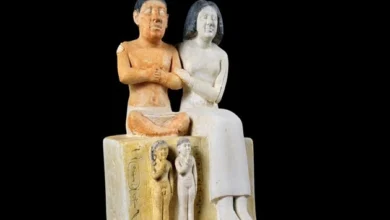Imhotep, Avicenna, Hippocrates – Doctors or Magicians?

It is already well known that the ancient healers were skilled healers. The chronicles of many nations, especially those of Egypt and India, contain information about the treatment of the sick and recipes for potions, ointments, decoctions, etc. The famous ancient stones of Ica depict the moment of operations on internal organs, including the heart. Old texts tell of the birth of the sons of the gods from earthly women, a change in the genetics of those living on Earth. There is even a version that the gods who visited the Earth transmitted some of their knowledge, including medical knowledge, to earthly civilizations.
Throughout the ages, health and longevity have been considered the most important blessings of man. Everyone’s desire to preserve their health is understandable. Medicine, as a science of health, arose a long time ago. In the distant past, the most purposeful developments in the field of medicine were made famous by the healers of Ancient Egypt.
Even the Greeks recognized the right of primacy for the Egyptians, especially in the field of disease prevention. The Egyptians believed that medicine was under the patronage of the god Thoth, who was depicted as a man, but with the head of a baboon or an ibis.
The level of knowledge of ancient Egyptians in the field of anatomy is amazing – they were far ahead of the ideas about the structure of the human body of all neighboring nations. Perhaps in this case, it has helped that the Egyptians had great practice in embalming, during which the body of the deceased was dissected, and the unique special compositions preserving the tissues from decomposition were used.
As early as the second millennium B.C., the Egyptians had an anatomical description of the heart, kidneys, brain, vessels, muscles, and intestines. In spite of this, the Egyptians were mistaken about some rather important things: they assumed that the heart was connected not only with arteries and veins, but also with muscles and nerves, and that emotions and thought processes were born and flowed not in the brain, but in the heart. Nor did they fully understand the purpose of the circulatory system. To get the latest stories, install our app here.
Medicine in Egypt was on a professional basis. There were medical schools – they were called Houses of Life. In addition to medicine, the schools taught architecture, mathematics, astronomy and sculpture. By the way, a doctor in Egypt functioned as a priest because medicine was an integral part of the religious cult. School students were assigned to practice in one of the temples, where they gained skills in medicine as well as learned the rites and mysteries of religion.
Many experienced Ancient Egyptian physicians kept their healing-secrets secret and passed them on to their sons by inheritance – there were whole dynasties who possessed the profession of healing. The information about the court physicians who treated the pharaohs and the nobility has survived to this day. These physicians had a high position in each of the ruling courts. It is interesting that already in ancient times, there were highly specialized healers – “court healer of the stomach”, “keeper of the king’s entrails”, “healer of the eyes at the pharaoh’s court”.
During the 3rd dynasty of the pharaohs, Imhotep was considered the best physician. Many modern specialists did not consider Imhotep to be a real man – it was too difficult to believe that the man could have those virtues described in the chronicles.
Imhotep, sometimes, was called the “Leonardo Da Vinci” of ancient Egypt, but most likely he was even greater: if Da Vinci had the status of a genius, Imhotep was exalted to the level of the god of medicine. To get the latest stories, install our app here.
He held the positions of advisor, priest, scribe, architect, and healer at Djoser’s court. It was Imhotep who was considered the creator of the step pyramid of Djoser. But it was his work in the field of medicine and magic that brought more fame to the talented scholar. Imhotep was the author of the Edwin Smith Papyrus, which describes about a hundred anatomical terms and records forty-eight types of injuries.
Imhotep was the founder of the medical school in Memphis (and this occurred a millennium before Hippocrates was born). The famous Canadian researcher and physician William Osler wrote of Imhotep thus: “…first he was a physician, this is clear from the mists of antiquity. Imhotep diagnosed and treated more than 200 diseases, 15 diseases of the stomach, 11 of the bladder, 29 diseases of the eyes, 18 of the skin, hair, nails, and tongue. Imhotep dealt with tuberculosis, appendicitis, gout, and arthritis. He also performed surgeries and treated teeth.
Imhotep obtained medicines from plants. He knew the location and function of vital organs and the circulation of the circulatory system. The Encyclopedia Britannica states that the “evidence provided by Egyptian and Greek sources gives an idea of Imhotep as a respected figure in the era of early civilization. His prestige only increased over the centuries, and his temples even in Greek times became centers of medical learning.”
In addition to Imhotep, the famous ancient healer was Medunefer – information about this is placed on the walls of his tomb. At the same time, the famous dentist Hesy-Ra(Hesy-Re) lived and worked in Egypt.
It should be noted that the healers who lived in ancient Egypt, not only treated, but also carried out medical research. An archive of their scientific works on papyrus scrolls has reached our days. The most famous of the medical treatises is the Ebers papyrus. It was discovered in 1872 by the German Egyptologist Georg Ebers. It is kept at the University of Leipzig. The treatise consists of more than a hundred pages and is entitled “The book of preparation of medicines for all parts of the body”. The age of the papyrus has also been established – 3600 years! In it, in hieroglyphs are described 900 recipes for medicines for diseases of the respiratory and cardiovascular systems, digestive organs, ear, throat and nose, treatment of bleeding, burns, eye diseases, infectious diseases, parasitic and skin diseases, and much more.
Another medical treatise dating back to 1600 B.C., named after the scholar who found it, is known as the Edwin Smith papyrus. It describes about fifty cases of injuries (bones of the skull, clavicles, ribcage, cervical vertebrae, forearms, and vertebral column) sustained during construction or warfare, as well as ways to treat these injuries.
At that time, a physician, after examining a patient, would utter one phrase from the following: “This is a disease that I could cure,” “this is a disease that I might be able to cure and fight,” “this is a disease that nothing can be done about.” It is clear from the papyrus that the ancient healers knew that it was the heart that pumped blood through the veins and were well-versed in treating brain injuries. The treatise also contains advice on the use of antiseptics: honey and tincture of linden bark (analog of aspirin).
Ancient Egyptian healers also practiced surgery: trepanation of the skull, treatment of fractures and dislocations, treatment of wounds against infection. The study of mummies confirmed the ability of ancient aesculapians to treat dental diseases. To get the latest stories, install our app here.
Ancient dentists were able to perform prosthetics – teeth were connected to each other with wires, holes were drilled in the jaws in the area of the roots of teeth in order to remove inflammation and to provide drainage of pus. All this confirms that ancient dentists had a high professional level. Healthy teeth were highly valued in those days. It was believed that if a person was missing at least one tooth, he was considered flawed. If a master knocked out a tooth from his slave, he was obliged to give him his freedom as atonement for the offense.
Many may be surprised to learn that one of the areas of ancient medicine was the sanatorium treatment. Sanatoriums existed on the basis of temples. Sick people would stay in the sanatoriums for days or weeks, receiving much-needed treatment and praying to god for their healing. As payment for the cure, the healed person presented the temple with an image of the healed organ made of silver, gold, or marble. Archaeologists have found many such offerings in the form of marble feet and hands, silver hearts and gold ears and eyes during excavations at Epidaurus.
Egyptian temples stored unique papyri in their vast libraries. Thousands of medical papyri have become precious materials for our contemporaries. Ancient healing rooms were called Asklepios (after the god of healing, Asclepius). The famous physician Hippocrates was born in one of these medical rooms.
Archaeologists were able to find the remains of these healing rooms. They saw small rooms for the sick, baths, and examination rooms. They were able to receive thousands of patients from all over the Mediterranean and used Hippocratic methods to treat them. These methods are set forth in the Hippocratic Compendium. Much data about the medicine of the ancients is set forth in the work of Herodotus, called the “History in Nine Books.”
When Alexander the Great conquered Egypt, the Greeks adopted the methods of medicine from the Egyptian physicians. The Greeks learned methods of diagnosis, learned how to prepare prescriptions for the sick, learned how to prescribe and use painkillers and sleeping pills. Now already in Greece medical schools began to be created, where the main disciplines were the study of methods of diagnosis and treatment, as well as philosophy.
It must be said that in ancient times, the activity of healers was subject to very strict moral rules, the violation of which was severely punished. In Christian countries, there was also a norm of responsibility for not helping the sick – such a transgression was strictly censured.
Chronicles tell us that Prophet Moses, too, received a brilliant education at Pharaoh’s court. He studied the methods of medicine and possessed a broad medical knowledge. “And Moses was taught all the wisdom of Egypt, and was mighty in word and deed.” There is nothing in the biblical books written by Moses related to magical methods of healing, but the medical knowledge spoken of in these books is far ahead of the level of the most advanced, at the time, Egyptian medical school. To get the latest stories, install our app here.
We can assume that Moses’ knowledge was a divine revelation. The Book of Exodus sets forth medical knowledge as well as the consequences of breaking God’s laws: “And he said, If thou shalt obey the voice of the Lord thy God, and do what is acceptable before his eyes, and heed his commandments, and keep all his statutes, then I will not bring on thee any of the diseases which I have brought on Egypt; for I am the Lord thy healer.” Here, for example, is what the biblical texts say about infectious diseases: “The leper who has this plague shall have his clothes torn, and his head uncovered, and he shall be covered to the lips, and he shall cry out, ‘unclean! unclean! But all the days that the plague is upon him, he shall be unclean, unclean he shall be; he shall dwell apart, outside the camp his habitation… He shall burn the garment, or the base, or the weft of wool or linen, or whatever leather thing on which the plague is, for it is leprosy corrosive: it shall be burnt with fire.”
But, as we know, the Enlightenment was a time of active criticism of biblical teaching and rejection of the Bible. Because of this, the nations were deprived of the knowledge they needed. As a consequence, terrible epidemics were caused by disregard for the rules of sanitation and hygiene.
Until the 19th century, European physicians did not consider it necessary to wash their hands after examining a dead person in order to continue seeing patients, which led to a large number of deaths among patients who died of unknown causes. And yet Moses wrote: “And the Lord spoke to Moses, saying, ‘Command the children of Israel to send out of the camp all the lepers, and all who have an effusion, and all who have defiled themselves from the dead.” Life confirms the validity of the medical knowledge handed down to mankind in the biblical texts.
There is also advice about alcohol and staying healthy in the divine texts. For example, the apostle Paul admonishes the young minister: “Henceforth drink not water alone, but drink a little wine, for the sake of your stomach and your frequent ailments,” “And do not be drunk with wine, from which there is debauchery”. The prophet Isaiah also spoke of the benefits of wine in small quantities: “Thus says the Lord: when there is juice in the bunch of grapes (the original text uses the word “new wine”), then they say, “do not harm it, for there is a blessing in it.” By the way, the word “new wine” refers to freshly pressed juice.
It is impossible not to pay tribute to the skill and professionalism of the ancient healers, who used all their strength and skill to treat sick and injured people. At the same time, they carried out scientific research in the field of medicine – hence the increase in their level of competence. So far, no one has been able to point confidently enough to the source of the ancient healers’ medical knowledge, and the future will show whether mankind will be able to discover this mystery.




